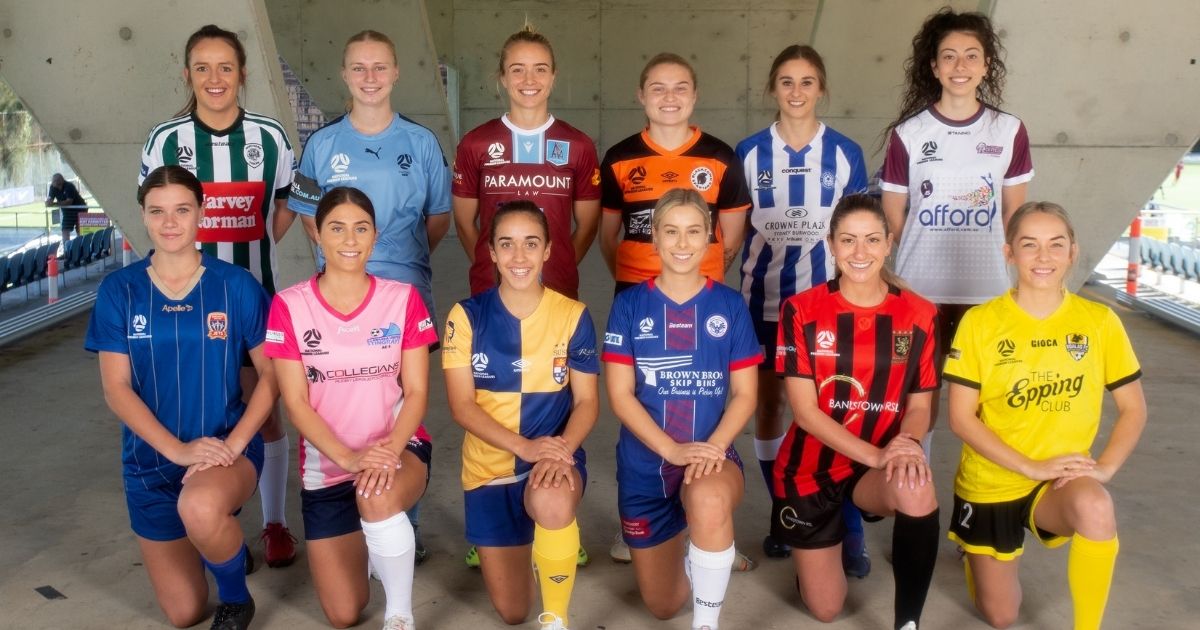The origins of football in Australia
The first inhabitants of Australia played ball games some of which involved kicking a possum-skin ball in the air. Those who arrived in the early nineteenth century brought their own ball games with them. Reports of small-sided, predominantly kicking games for money or other prizes are reported long before the first local set of extant rules for the Melbourne Football Club were written in 1859. Those rules were very similar to the Cambridge University rules of 1845, and those of John Hope’s club in Edinburgh of 1824.
In 1850, Dalmahoy Campbell and Francis Stephen organised an eleven-a-side game in Melbourne and Campbell was involved in another that year. These matches and others were unknown to and consequently ignored by the small group who drew up the Melbourne Football Club rules nearly a decade later.
The practice of the games evolved over succeeding years, only gradually diverging into something resembling the codes we know today. A handling game with an offside rule influenced by the practice of Rugby school in England became popular in New South Wales, while the Victorian code had its first free kick as the colony actually lost population in some years between 1860 and 1880. There was no volume of migrants to challenge the local football code. The early adoption of an eight-hour day for certain groups of skilled workers created space for sport on Saturday afternoons and crowds of spectators attended the Victorian code.
The new wave of immigration in the 1880s brought a critical mass of newcomers some of whom had a knowledge of the Football Association game or its Scottish equivalent. Matches were reported in Tasmania, South Australia and in 1880 John Walter Fletcher organised a series of matches in Sydney. The first inter-colonial matches between Victoria and New South Wales took place in Melbourne in 1883 and annually thereafter for several years. Queensland and South Australia soon followed, while Western Australian clubs were playing by Football Association rules from the 1890s. A team from Western Australia toured the eastern states in 1909.
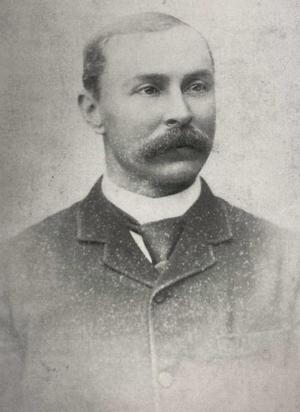
Though matches between teams called England and Scotland drew crowds of several thousands in the eastern capital cities, for the most part Association Football, sometimes now called British football or soccer to distinguish it from the other codes, remained primarily a participation rather than a spectator sport.
Interestingly the Scots and Northern English were the first to name their clubs after elements of their heritage rather than the location where they were situated in Australia. Celtics, Northumberland and Durhams, Fifers, and Thistles were formed in each of the colonies. This practice was to be followed much later by post-Second World War migrants to Australia. These clubs served more than just the sport. They catered for newly-arrived migrants and often helped them come to terms with Australian society and its evolving culture. Once again this was something which became very important in the second half of the twentieth century. The downside was that the game was later seen as a migrant game, rather than an Australian one, despite the fact that the various codes shared a common heritage and a similar length of time in Australia.
Leagues were established in each of the colonies with those in the capital cities becoming dominant. In 1908 there was a revival in Victoria stimulated by Harry Dockerty, who helped set up a local league and presented the Cup which still bears his name today. The Sydney metropolitan competition was probably the strongest in those early years and they hosted a touring team from New Zealand in 1905. Queensland also had excellent teams and local leagues. Mining areas in all the colonies and states were strong centres of Association football.
A national organisation was formed in 1911 and the game was growing when World War One intervened. Many of the very recent British migrants signed up straight away and some clubs lost virtually their whole complement of players. The male game came to a virtual halt, though women working in factories took up the game as a recreation and fund raiser.
Written by Roy Hay
History of Women's Football in Australia
The roaring success of the Commonwealth Bank Matildas in this century would not have been possible if it was not for some of the amazing and inspirational people that brought the women's game out of decades of obscurity in the 1970's.
The beginning
There are reports of "ladies" teams being formed in New South Wales as early as 1903, but the first public match of association football between two women's teams occurred when North Brisbane defeated South Brisbane 2-0 at the Brisbane Cricket Ground (now The Gabba) on 24 September 1921.
North Brisbane was referred to as the ‘Reds’ and South Brisbane the ‘Blues’, and they were both kitted out in full football uniforms. Over 10,000 people attended the match, which is surely a record that stood for quite some time.
The match took place after momentum began to pick up in Brisbane, following the forming of the first ever women's team in Australia - the LaTrobe Ladies - as well as a few others, and ultimately the formation of the The Queensland Women’s Ladies Soccer Football Association.
Another public match took place in October in Ipswich, drawing another big crowd of over 3,000 supporters. This time, North and South Brisbane played out an entertaining 2-2 draw.
You can read the full history of Women's Football in Australia here
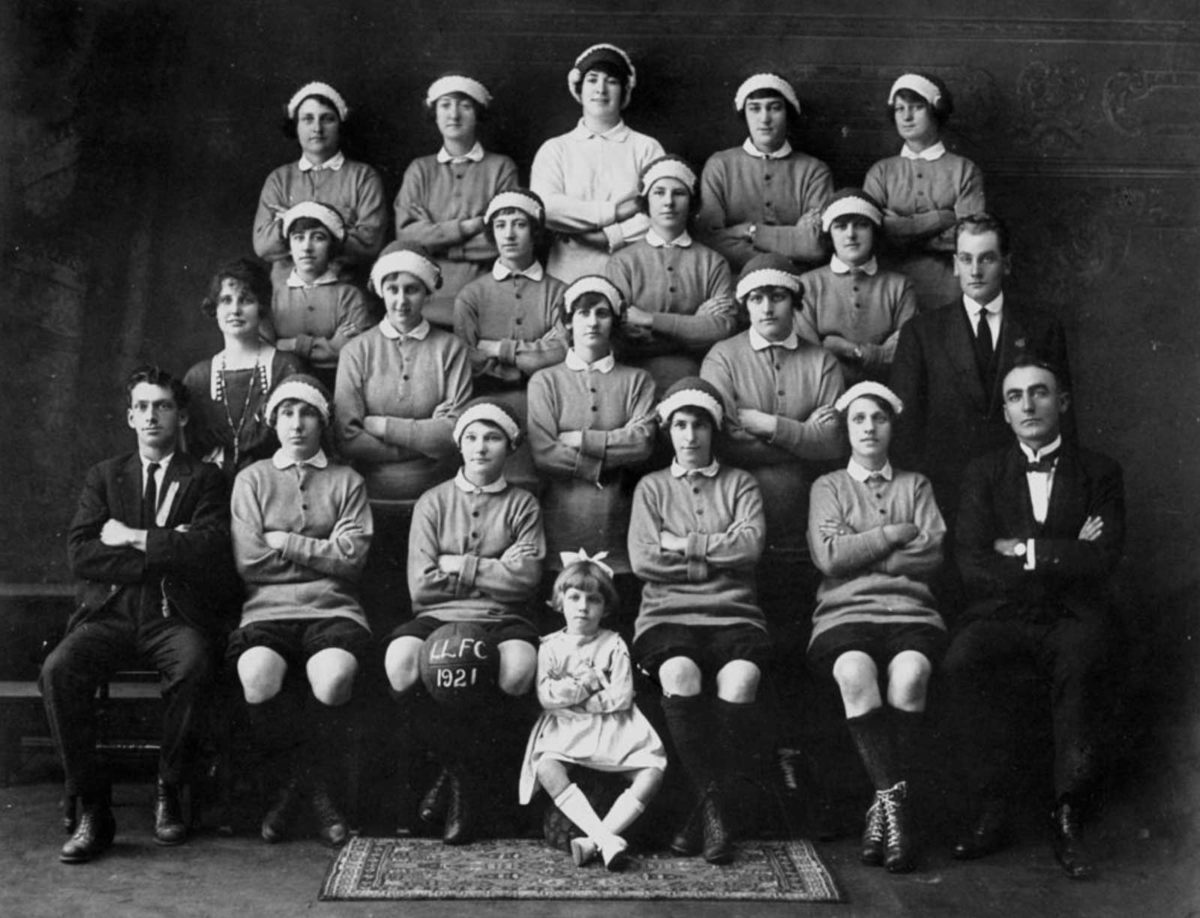
History of Football Australia

Football Australia's origins can be traced back to the early 1900's, with the formation of the 'Commonwealth Football Association' on December 21, 1911.
The Commonwealth Football Association secured the first ever international matches for the Australian Men's Team in 1922, and changed its name to the 'Football Association' (Australia) in 1923 ahead of a proposed 1925 tour of England.
The body was then superseded by the 'Australian Soccer Football Association' (ASFA), which operated for nearly 40 years, receiving FIFA membership in June 1956.
This lasted just four years, however, with the Association disbanding in 1960 after being suspended from FIFA for the poaching of players from overseas.
In 1961 the 'Australian Soccer Federation' (ASF) was formed, and was admitted to FIFA in 1963 after outstanding fines had been paid.
Having been isolated from international football during this period, the ASF repeatedly made requests to join the Asian Football Confederation (AFC), but were knocked back.
It wasn't until 1966 that Australia joined forces with New Zealand - who were also knocked back by the AFC - to create the 'Oceania Football Federation' (now Oceania Football Confederation).
The four founding members were Australia, New Zealand, Fiji and Papua New Guinea, with New Caledonia a provisional member. Australia continued to pursue admittance to the AFC, but were not successful in any of their attempts.
In 1995 the ASF changed their name to 'Soccer Australia'. But following recommendations of the Crawford Report in 2003, the report recommended, among other things, the reconstitution of the governing body with an interim board headed by prominent businessman Frank Lowy. Three months after Lowy's appointment Soccer Australia was placed into liquidation and the 'Australia Soccer Association' (ASA) was created.
Before 2003, the governing body of women's football in Australia was run by the 'Australian Women's Soccer Association', which formed in 1974. But from 2003 onwards, it was absorbed into the ASA. The AWSA ran the Women's National Soccer League, National Championships, and the Australian Women's National Team (which later became the Matildas).
After the disbandment of the National Soccer League (NSL) in 2004, the ASA became 'Football Federation Australia' (FFA) on 1 January 2005, ahead of one of the biggest years in Australian football history. In August of that year the first season of the A-League begun, before in November the Socceroos qualified for their first FIFA World Cup in 32 years.
It was also revealed in 2005 that FFA would be moving to the AFC, over 40 years after the first attempt in the 1960's, officially joining on 1 January 2006. FFA hosted the AFC Women's Cup later that year, with the Matildas reaching the Final of the tournament held in Adelaide.
In 2013, Australia was admitted as a full member to the ASEAN Football Federation (AFF), after formally joining as an invite affiliation to the regional body in 2006.
In 2020, FFA officially became 'Football Australia' to signify a fresh and exciting start for the game under the new strategic agenda, and a return to the roots of football in Australia. This coupled with the official unbundling of Football Australia and the A-League, W-League, Y-League and E-League, which would now fall under a new and independent entity called the 'Australian Professional Leagues'.
The Australian Men’s National Team
The history of the Australian Men's National Football team dates all the way back to 1922, when a tour invitation from New Zealand Football was accepted by the Commonwealth Football Association.
Players from NSW and Queensland were chosen for the tour which consisted fourteen games, including three Tests. The first of those took place in Dunedin on 17 June, in which New Zealand were victorious 3-1, with William Maunder scoring the only goal for Australia.
Australia played in a light-blue strip with maroon hoops on the socks, incorporating the colours of both NSW and Queensland. They wore those colours until 1924 when Green & Gold were incorporated into the kit.
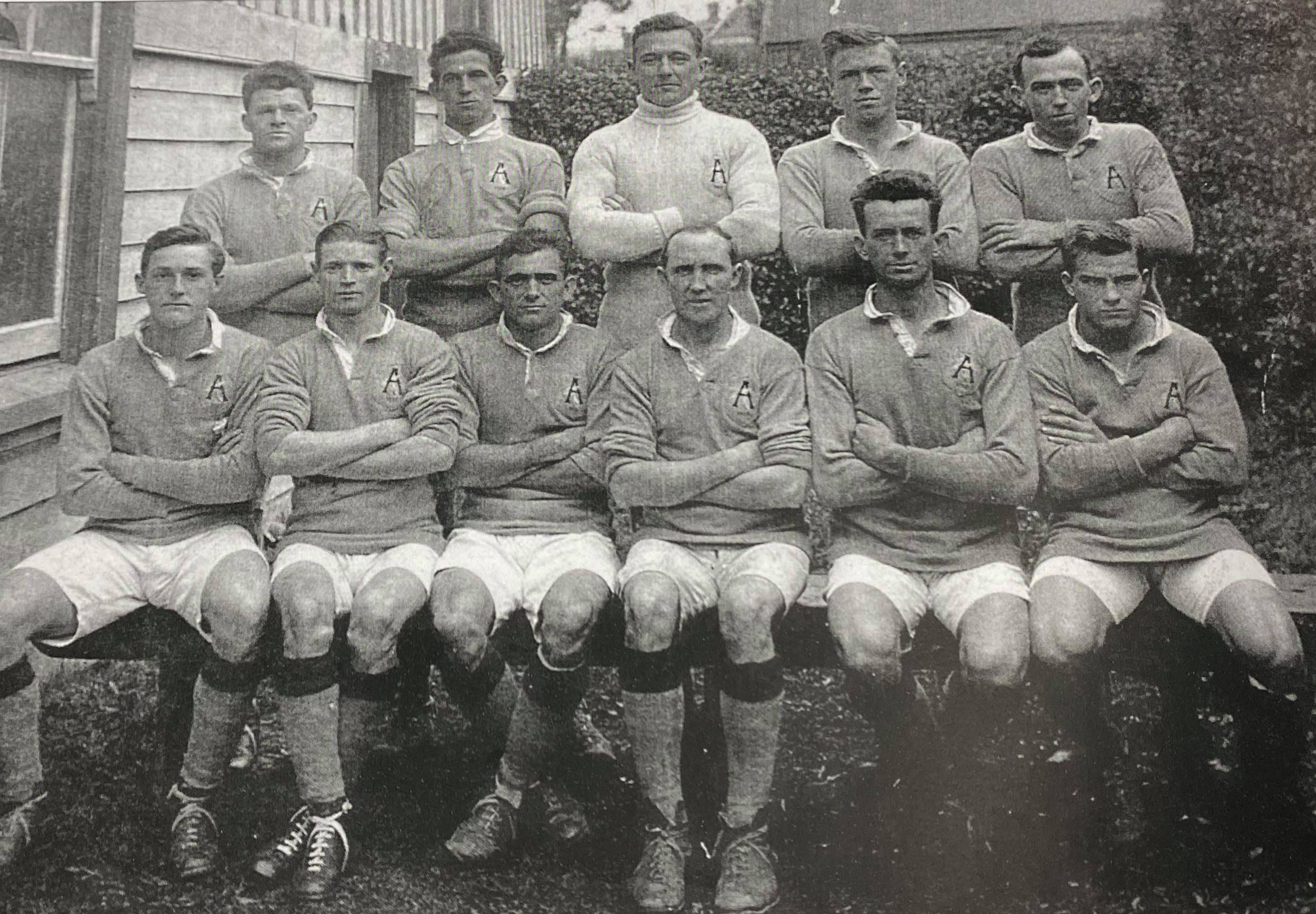
Australia played their first home game in 1923, and played a range of Tests and friendlies against the likes of NZ, Canada, South Africa and India until the 1956 Olympic Games, which were the team's first 'competitive' match. Australia won their first round match against Japan 2-0, but were eliminated by India in the last eight after a 4-2 loss.
Australia's first ever FIFA World Cup qualification campaign took place in Phnom Penh against North Korea on November 21, 1965 following Australia's FIFA ban from international football from 1959-1963. It was a two-legged playoff with Australia losing the first match 6-1 and then the return leg three days later 3-1. Les Scheinflug holds the honour of scoring the first-ever goal for Australia in a World Cup qualifier with a 70th-minute penalty. North Korea would famously go on to make the quarter finals in the 1966 World Cup, losing 5-3 to Portugal.
Australia's campaign for the 1970 FIFA World Cup saw them knock out Japan, South Korea and Rhodesia. After playing three matches against Rhodesia in Mozambique, Australia travelled from the Southern African nation straight to Israel for the next stage of an arduous qualification campaign. They lost 1-0 and then returned home to only manage a 1-1 result in Sydney, which ended the World Cup dream.
But four years later under the guidance of coach Rale Rasic, Australia prevailed from the first stage of qualifying, winning a group that included New Zealand, Indonesia and Iraq. They then faced Iran home and away, winning the first leg in Sydney 3-0 before Iran won 2-0 in the second leg in Tehran. South Korea then awaited the Socceroos. Both matches ended in draws, prompting a hastily-arranged decider in Hong Kong. Jimmy Mackay scored the goal (watch it below) which booked Australia its place in the 1974 tournament.
Australia drew hosts West Germany, nearby East Germany, and South American team Chile in a difficult Group 1. The first match was against East Germany in Hamburg and Col Curran claimed an unwanted piece of history, becoming the first Australian to score in the World Cup finals - albeit for the other side. Australia lost that match 2-0 and backed up four days later against West Germany, losing 3-0. Against Chile in Berlin, Australia claimed its first World Cup point courtesy of a 0-0 draw.
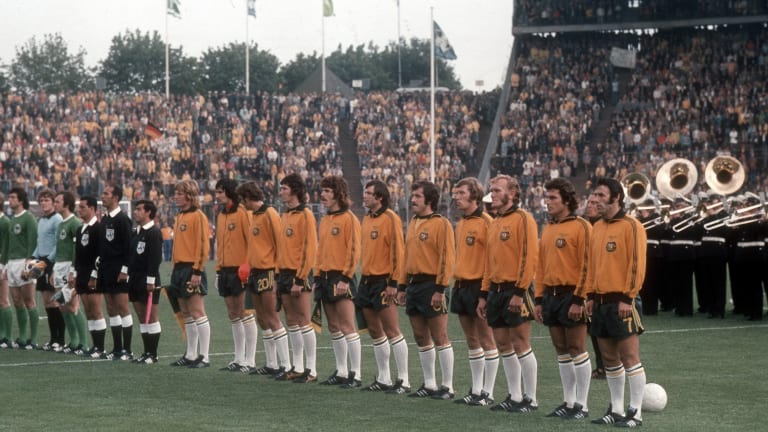
The Socceroos were unsuccessful in qualifying for 1978 but secured their first ever piece of official silverware in 1980, winning the OFC Nations Cup, which was won a further three times (1996, 2000, and 2004).
The Socceroos also hosted the 1988 Australian Bicentennial Gold Cup, which was a one-off association football tournament to celebrate the bincentennial of first settlement at Port Jackson by Captain Arthur Phillip in 1788.
The tournament featured 1986 FIFA World Cup winners Argentina, 1988 AFC Asian Cup winners Saudi Arabia, and the number-one ranked team in the world at the time Brazil. Australia started off with a loss to Brazil but recovered with a win over Saudi Arabia and a famous 4-1 victory over Argentina at the Sydney Football Stadium to reach the final. In the end, the Brazilians secured the Cup, defeating the Socceroos 2-0.
Further attempts to qualify for a FIFA World Cup in '82, '86, '90 and '94 were also unsuccessful, with the latter campaign coming as close as Australia had been, losing 2-1 on aggregate to a Diego Maradona-lead Argentina.
But it wasn't until the 1998 qualifying campaign, where Australia were just 15 minutes away from a first FIFA World Cup appearance in 24 years, that the ultimate heartbreak was felt. With a 2-0 lead (3-1 on aggregate) over Iran at the MCG, the Socceroos conceded twice to draw the match 2-2, with Iran qualifying for the France World Cup 3-3 on aggregate.
The next campaign ended in another disappointing end, with a 3-1 loss on aggregate against South American powerhouse Uruguay, despite holding a 1-0 lead after the first leg. But the culmination of all of the heartbreak was let go just four years later.
The Socceroos were up against Uruguay once again for a spot in the World Cup, and went into the second leg trailing 1-0 after a loss in Montevideo. Mark Bresciano managed to equalise in the first half of the return leg in Sydney, and after a pulsating 120 minutes, the game went to penalties. Mark Schwarzer proved to be the hero, saving two of Uruguay's spot-kicks, and setting up John Aloisi to convert the penalty that ended Australia's 32-year exile from the FIFA World Cup.
Back among the World Cup elite after 32 years, Australia was faced with Brazil, Japan and Croatia in its group in 2006. The fairytale continued to roll on in the group stages. Trailing 1-0 with fewer than 10 minutes left in the opening match against Japan in Kaiserslautern, it looked as if the World Cup dream would be over before it began.
But up stepped Tim Cahill, writing his place in history as the first player to score a goal for Australia at a World Cup. On 89 minutes, Cahill struck again to put Australia in front, while a stunning comeback was complete when Aloisi scored in injury time.
Brazil, the most dominant team in World Cup history and the defending World Cup champion, was next in Munich. A determined Australia was unlucky to lose 2-0, but a draw against Croatia would be enough to get through to the round of 16. The drama continued in the match in Stuttgart, with Croatia scoring in just the second minute. Craig Moore levelled things up before half-time thanks to a penalty, but a mistake from goalkeeper Zeljko Kalac allowed Croatia to take the lead again just over 30 minutes from time.
In a frantic finish, Australia peppered the Croatian goalkeeper with Harry Kewell scoring the crucial goal with just 11 minutes left. Referee Graham Poll infamously showed Croatian defender Josip Simunic three yellow cards, while he blew full time as Aloisi was about to give Australia victory, but it was all academic as the Socceroos progressed to the Round of 16.
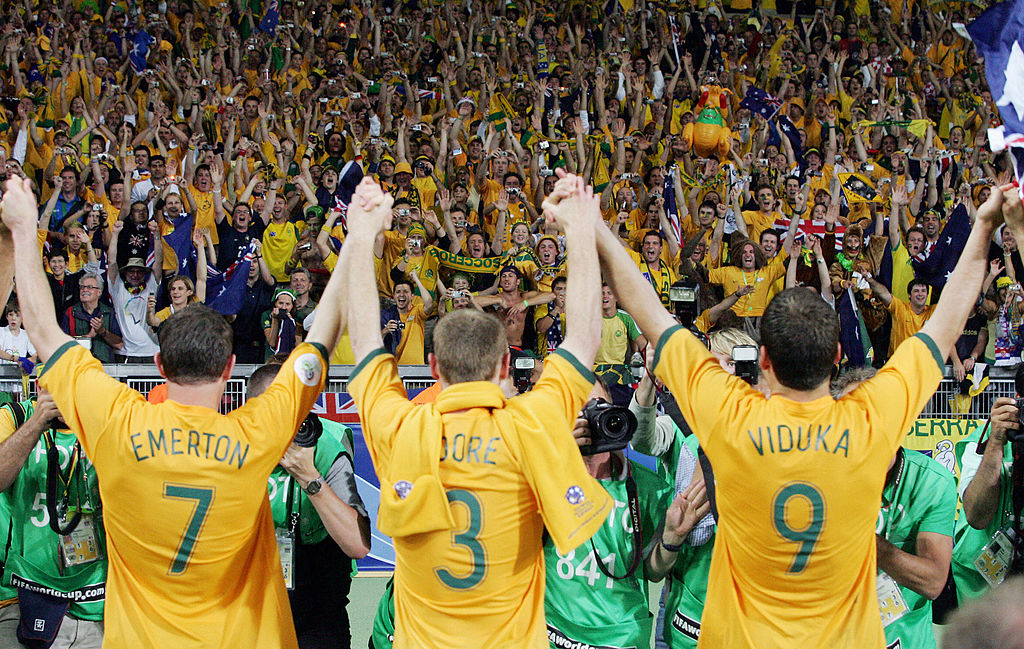
Italy and even more drama awaited in Kaiserslautern. With the match delicately poised at 0-0, Marco Materazzi would be sent off on 50 minutes, giving Australia a fantastic opportunity to progress to the final eight. But fate dealt the brave Aussies a cruel hand in the final minute of normal time with Lucas Neill and Fabio Grosso coming together in the box. The referee pointed to the spot and Francesco Totti would score the penalty which broke Australia's heart. Italy would go on to win the final.
Following the tournament, the Socceroos officially moved from Oceania to the Asian Football Confederation and made their debut in Asia in August 2006 with a home match against Kuwait in a 2007 AFC Asian Cup Qualifier. The team qualified for the tournament, held across South East Asia, losing out on penalties to Japan in the Quarter Finals.
The Socceroos qualified for the 2010 FIFA World Cup in South Africa in comfortable fashion, but this time were unsuccessful in advancing from the group stage. A 4-0 defeat by Germany first up was followed by a 1-1 draw with Ghana, but a 2-1 win over Serbia in the final game was not enough to progress.
The team secured a spot at the AFC Asian Cup Final in 2011, but were once again defeated by Japan, who scored an 109th minute extra-time goal to win 1-0. Australia qualified for a third-straight FIFA World Cup ahead of the Brazil tournament in 2014, courtesy of a famous header from Josh Kennedy against Iraq.
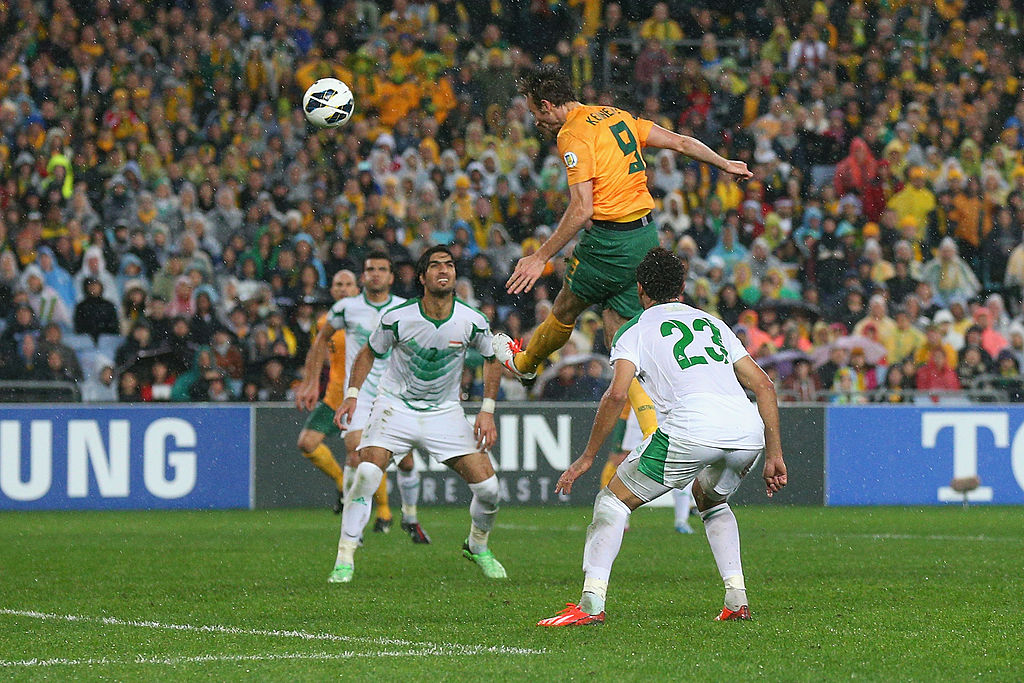
But this time, under the guidance of Ange Postecoglou, the Socceroos suffered three straight defeats against Chile, the Netherlands, and Spain. However, only six months later, came one of the greatest moments in Socceroos history.
Australia had won hosting rights to the 2015 AFC Asian Cup, which took place in January of that year. Australia secured wins over Kuwait and Oman in the group stage, booking a spot against China in the Quarter Finals. A double from Tim Cahill in Brisbane saw the Socceroos win 2-0 and gain momentum as the tournament went on.
The Semi Finals saw the Socceroos come up against the United Arab Emirates in Newcastle, and the side were 2-0 up inside 14 minutes thanks to Jason Davidson and Trent Sainsbury. The scored stayed that way, and Australia were into a second consecutive Final. And they wouldn't face Japan, they'd face Korea Republic.
Over 76,000 people packed into Stadium Australia, the same venue that the Socceroos had qualified for the 2006 FIFA World Cup 10 years prior, to witness another momentous evening. A Mass Luongo goal had Australia 1-0 up, before a crushing equaliser from Korea in injury-time. But Australia would prevail in extra-time, with some superb work from Tomi Juric setting up James Troisi for the winner. Australia became Champions of Asia!
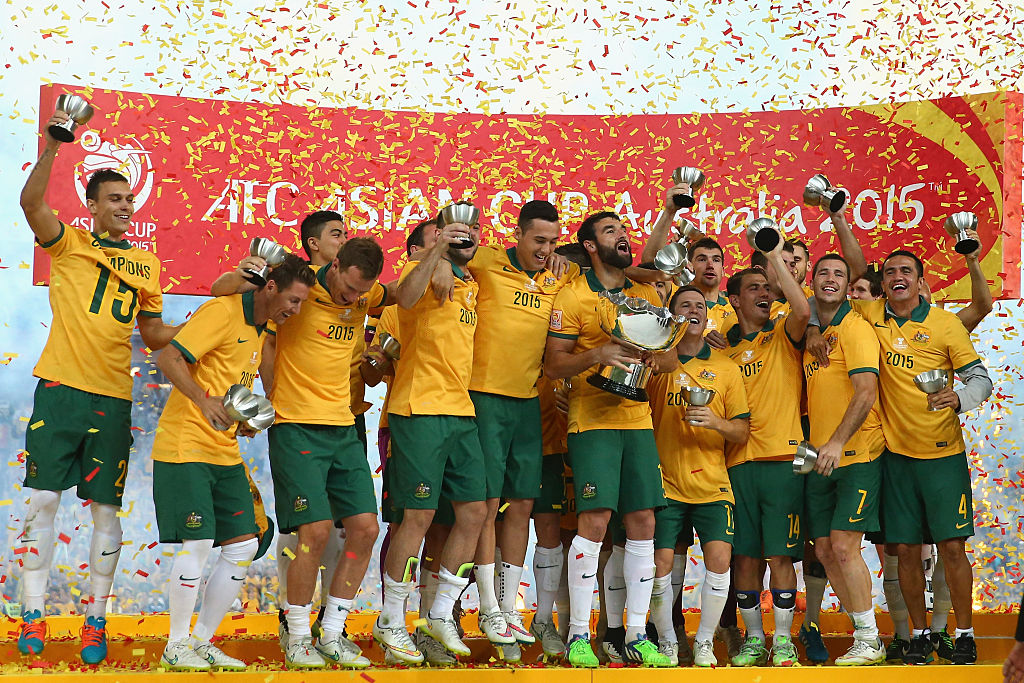
Postecoglou continued on as Head Coach and the Road to the 2018 FIFA World Cup in Russia was the longest of any national team, ever. The side finished third in the final group after 18 matches, and had to play-off against a fellow AFC side and then a side from CONCACAF to make it to a fourth-straight World Cup. A spirited performance against Syria over two legs saw Australia advance 3-2 on aggregare, before defeating Honduras 3-1 across a gruelling two legs.
Australia, under new coach Bert van Marwijk, were drawn against France, Denmark and Peru in Russia, and it was another difficult tournament for the team. The side came close against eventual Champions France, narrowly losing 2-1, before drawing 1-1 against Denmark. However, in a must-win clash against Peru, the Socceroos suffered a 2-0 loss.
Hoping to back up their AFC Asian Cup win in 2019 in the UAE, with Graham Arnold in charge, the Socceroos were unable to defend their crown. The side made it out of the group against Jordan, Palestine, and Syria, but fell to hosts UAE in the Quarter Finals.
🇦🇺 The Australian Women’s National Team
While records of women’s football in Australia date back to the 1920s, the first officially recognised Australian Women’s National Team took the field in 1975 at the Asian Women’s Championship in Hong Kong. Sanctioned by the Australian Soccer Federation (ASF), the team competed in green and gold and wore the Australian Coat of Arms, marking the beginning of Australia’s official women’s international football journey.
Led by Coach Joe O’Connor and Captain Pat O’Connor, the 1975 side – now formally recognised as the First Matildas – paved the way for generations to follow. They earned ‘A’ International caps numbered “O1”, acknowledging their foundational role in the national team’s history. Their participation in the ALFC tournament – now officially recognised by the Asian Football Confederation (AFC) – represents Australia’s first women’s international matches.
In 1978, the evolution of the national team continued as Australia participated in the inaugural World Women's Invitational Tournament in Chinese Taipei. This squad, selected by coach Jim Selby, was predominantly drawn from New South Wales and Western Australia. Captain Connie Byrnes had the honour of leading this next generation of Matildas.
Australia competed admirably, missing sixth place on goal difference and ultimately finishing eighth in the tournament. Notable results included:
- W 1–0 v Austria
- D 1–1 v USA
- L 0–1 v Sweden
- D 0–0 v Denmark
- W 5–0 v Thailand
Young star Anna Senjuschenko, tragically lost in a car accident a year later, was named one of the tournament’s standout players by the media. Captain Connie Byrnes was honoured as Australia’s “Miss Football”.
Together, the 1975 and 1978 teams represent the proud beginnings of the Australian Women’s National Team program, now globally celebrated as the CommBank Matildas.
The women’s team played on sporadic occasions throughout the 1980s, with only a limited number of major international competitions enticing much attention to the team.
The introduction of the FIFA Women’s World Cup and women’s football at the Olympic Games in the 1990s, combined with a surge in participation levels throughout the country, sparked renewed interest in the national women’s team, now called the Westfield Matildas.
On 6 October 1979, the Matildas played New Zealand in their first full 'A' international at Seymour Shaw Park in Sydney, in a game that finished 2-2. Julie Dolan AM, who was the captain of the team for that game, was bestowed the honour of cap number one for the Matildas.
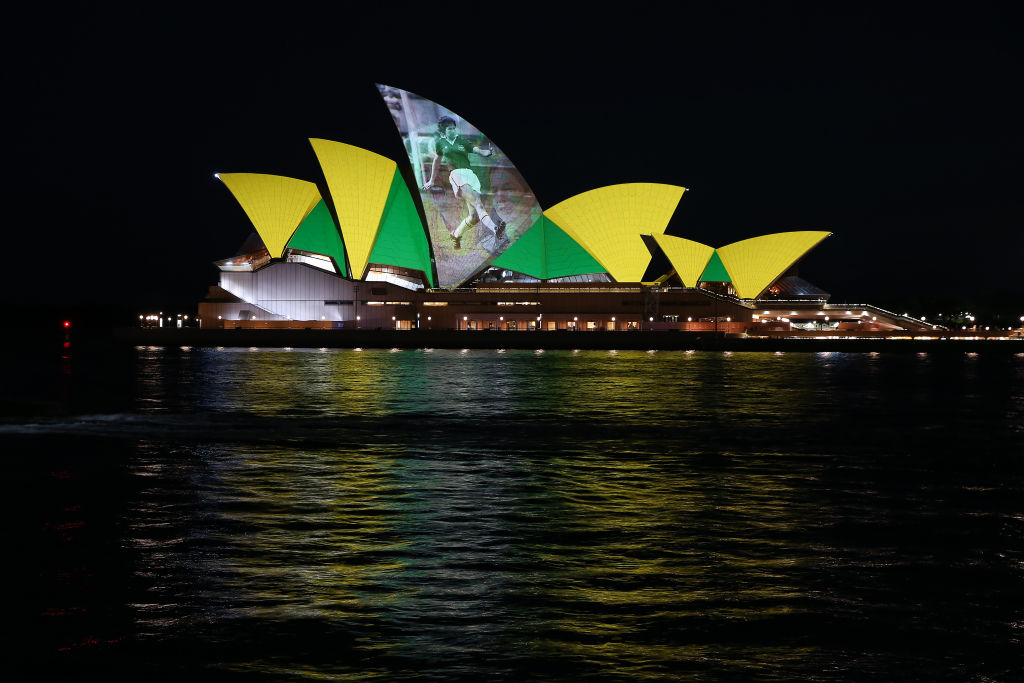
After barely being beaten out of a place at the inaugural FIFA Women’s World Cup in China in 1991 on goal difference (by New Zealand in the Oceania qualifiers), the Australian women’s national team has never failed to qualify for the World Cup, finishing as top team in Oceania in the 1995, 1999 and 2003 Oceania World Cup qualifiers.
The Matildas qualified for the 2007 finals via Asia for the first time, after reaching the final of the 2006 AFC Asian Women’s Championship in Adelaide. Australia qualified for the following year’s World Cup after defeating Japan in the semi-final 2-0 (top three nations in the tournament qualified for the World Cup); the final however saw the Westfield Matildas go down to China only after a penalty shoot-out, to finish runners-up in the tournament.
The Aussies went that one better in a memorable 2010 AFC Asian Women’s Cup in China, defeating the highly-fancied DPR Korea side on penalties in the final following a 1-1 scoreline after 120 minutes of play, and earning the country another shot at the World Cup.
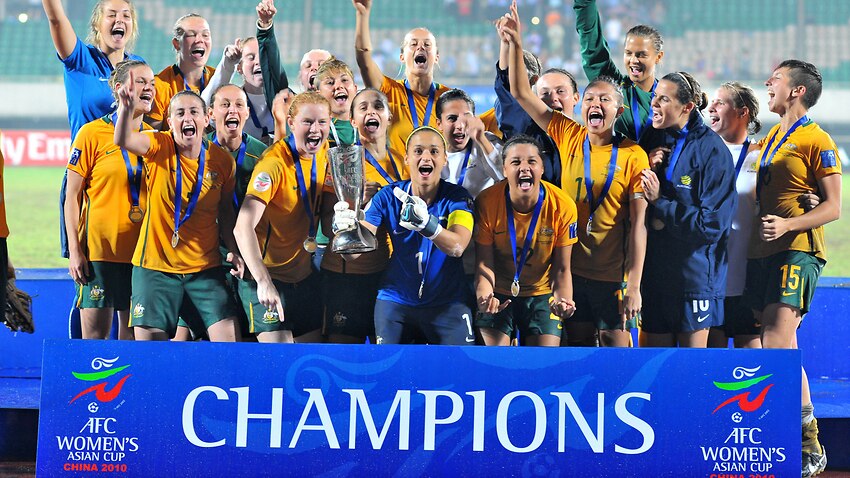
Australia appeared to gradually learn and improve throughout each of its first few World Cup forays, as the aggregate goal differences over each World Cup shows: a goals for-and-against record of 3-13 (minus 10) in its 1995 World Cup matches reduced to minus 4 in 1999, and went down to minus 2 in the 2003 campaign. By the 2007 tournament, a positive goal difference over the four matches, which included Australia’s first World Cup finals win (4-1 over Ghana) and quarter-final appearance (a 2-3 loss to Brazil) displayed how far the Aussie women’s team had come over the previous 12 years. Further testament to the team was provided when coach Tom Sermanni was named 2007 AFC Coach of the Year.
In 2011 Australia put in arguably their best FIFA Women’s World Cup performance to date with a strong showing in Group D where the team came out of the group with six points following wins against Equatorial Guinea and Norway as well as a narrow 1-nil loss to Brazil. In a tournament where Australia had the third youngest team, with an average age of 22, the team performed strongly and received many plaudits for their style of play and character. Australia were knocked out in the quarter final by eventual third-placed Sweden, losing 3-1 to the world’s fifth ranked nation.
2015 saw Australia start their FIFA Women's World Cup campaign against eventual winners the United States in their opening Group D clash. Playing some scintillating football, the Westfield Matildas pushed the Americans all the way before losing 3-1.
Next up was Nigeria, and a Kyah Simon double was enough to earn Australia a crucial 2-0 win, setting up a clash with Sweden, the side that had knocked them out four years earlier. Despite a 1-1 draw Australia finished second in their group and would face an imposing Brazil side in the Round of 16.
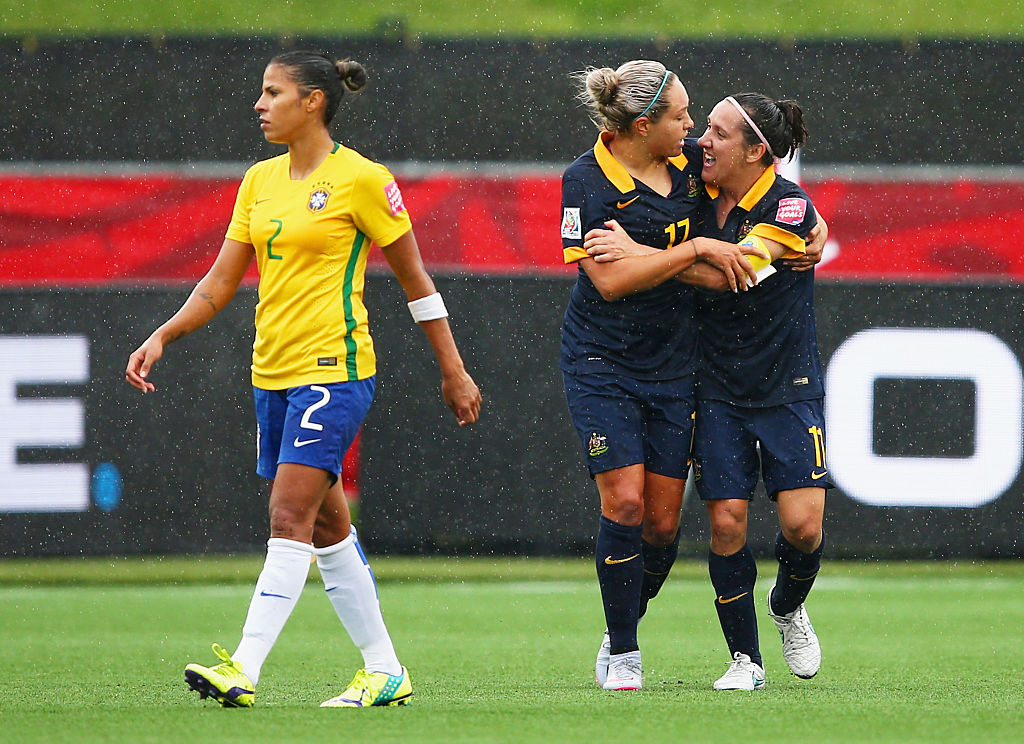
That match in Moncton would go on to become part of Australian football folklore, as the Westfield Matildas shocked the more-fancied Brazilians. Another Kyah Simon goal, this time in the 80th minute, sealed a memorable result.
A Quarter-Final against eventual runners-up Japan would prove a bridge too far, with the Green and Gold going down 1-0 in Edmonton.
Drawn in Group C, the Matildas began their FIFA Women's World Cup 2019 against the fast-improving Italy. It was a bright start for Australia as captain Sam Kerr opened her FIFA Women's World Cup account with a penalty conversion in the first half. However, it wasn't enough for victory as the Italians recorded a late winner to take the three points.
A familiar opponent was next for Australia as, for the fifth major tournament in a row, they were to meet Brazil. It was a match befitting the rivalry built between the two nations with the Matildas coming back from a 2-0 deficit to claim a famous 3-2 victory in Montpellier.
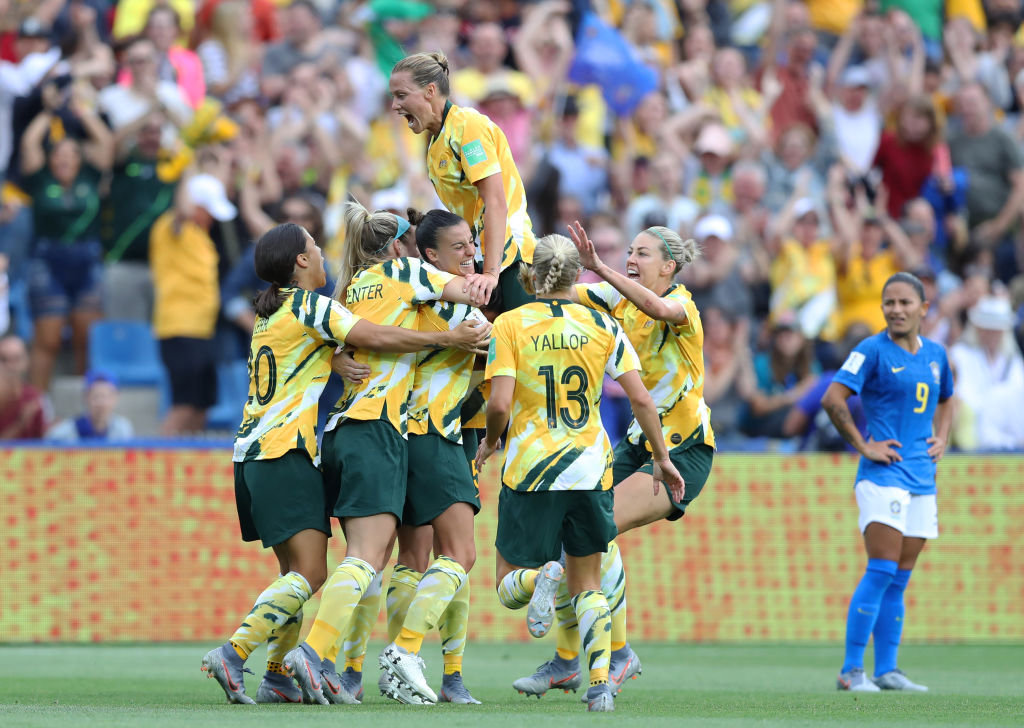
A superstar prior to the tournament, Kerr made Australian history in the final group match against Jamaica. The prolific striker netted all of Australia's goals, becoming the first Aussie to score a FIFA World Cup hat-trick, in their 4-1 win over the Reggae Girlz to set up a Round of 16 clash with Norway.
After Norway took a first half lead in the Round of 16 encounter, Australia worked their way into the match and put pressure on the Norwegians. That pressure finally told in the second half with Elise Kellond-Knight scoring straight from a corner to bring the Matildas level. A back and forth struggle resulted in penalties with Australia ending their tournament in Nice.
Australia was swept with Matildas fever, and in late 2019 set a record for the highest attended standalone women's football match in the country's history. 20,029 fans turned out at Bankwest Stadium in Sydney on 9 November to support the Green & Gold in a friendly match against Chile.
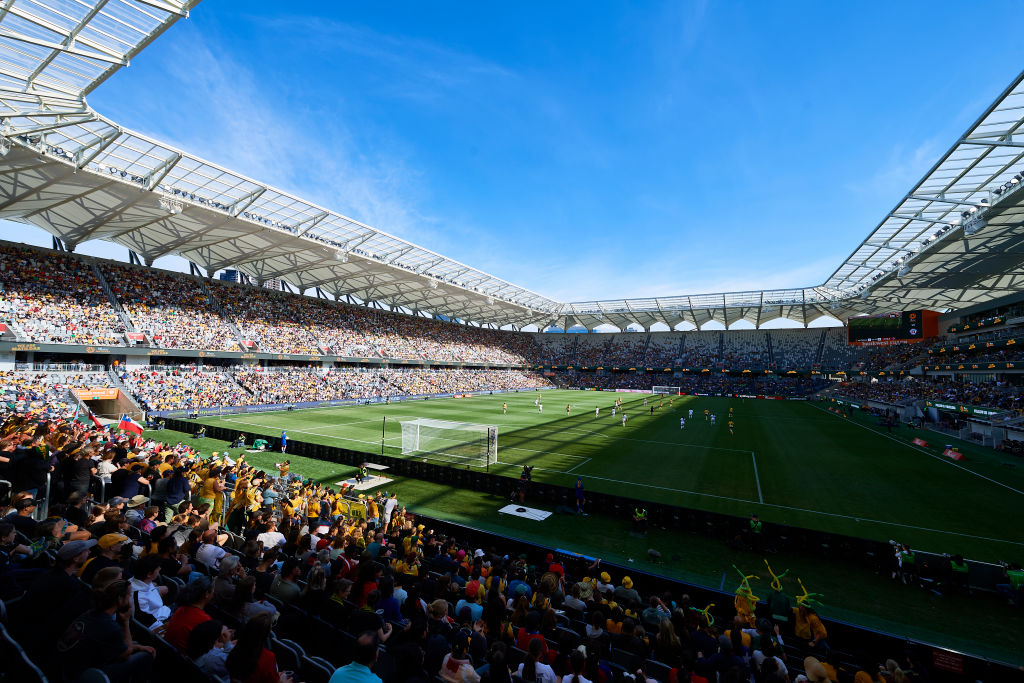
In 2021, the Matildas were drawn against USA, Sweden & New Zealand in their group for the postponed Tokyo Olympic Games.
A win against New Zealand and draw with USA was enough for the team to get out of the group, before defeated Great Britain 4-3 after extra time in a thrilling Quarter Final.
The side was guaranteed a top-four finish - the Matildas' best ever result at an Olympic Games - but narrow defeats to Sweden & USA in the Semi Finals & Bronze Medal matches respectively meant Australia just missed out on a first-ever football medal.
Off the back of their historic Tokyo 2020 tournament, the Matildas returned home to Australia in October 2021 for a two-match series against Brazil at CommBank Stadium, resulting in an Australia win in the first game and a 2-2 draw in the second.
But just a month later, the Matildas broke their home attendance record when a massive 35,109 fans turned out at Stadium Australia to see them face World Number One United States.
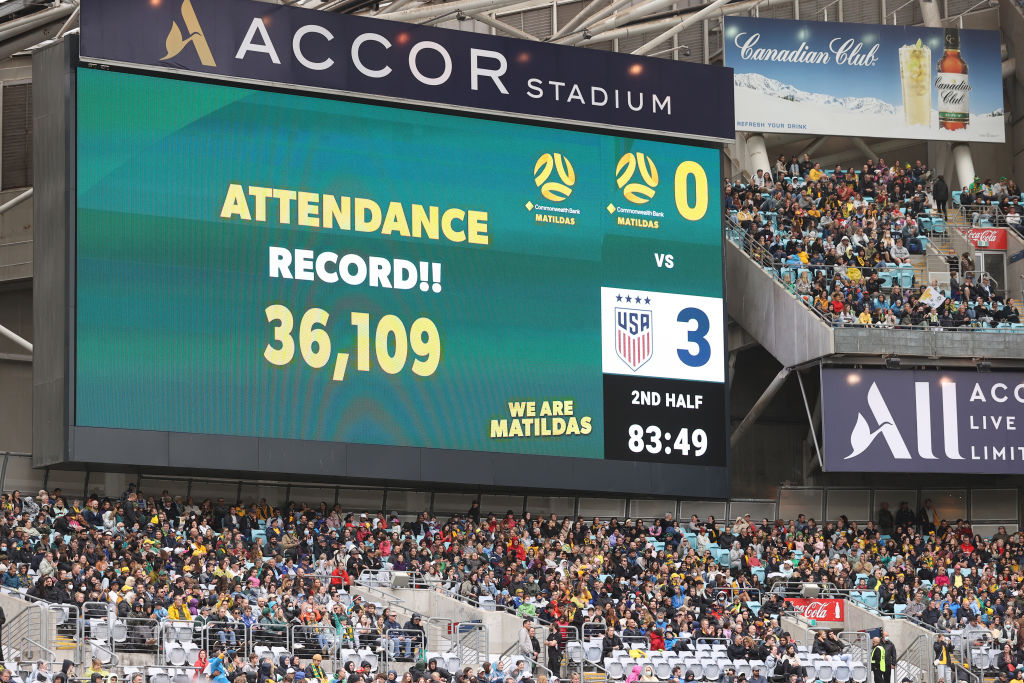
2023 will see the Commonwealth Bank Matildas compete in a home FIFA Women’s World CupTM. Co-hosted with New Zealand, the tournament will be the first in the Southern Hemisphere, the first in the Asia-Pacific region, the first co-confederation FIFA tournament and the first time Australia will host a senior FIFA tournament.
Australia at the Olympic Games
Men's team (Olyroos)
Australia's men's football team first competed at the Melbourne 1956 Olympic Games, qualifying as hosts.
The team finished fifth, with Graham McMillan and Frank Loughran scoring the first goals in a 2-0 win over Japan in the first round, before bowing out following a 4-2 loss against India in the Quarter Finals.
Their next appearance came at the 1988 Seoul Olympics, winning against Yugoslavia and Nigeria 1-0 in the group stage, in between a 3-0 loss to Brazil. The team also bowed out at the Quarter Finals, losing 3-0 to the Soviet Union.
Our best ever appearance at an Olympic Games came four years later in Barcelona in 1992. The team suffered a loss in the first game, but a 1-1 draw against Mexico in the second game kept hopes alive, before a 3-0 win over Denmark with goals from John Markovski, Damian Mori and Tony Vidmar sending the Aussies through to the Quarter Finals.
Australia then beat Sweden 2-1 in the Quarters thanks to Markovski and Shaun Murphy goals, but missed out on the Final after going down to Poland in the Semis. The team narrowly missed out on a bronze medal, falling 1-0 to Ghana at the Camp Nou in the third-place match.
Age limits for the men's Olympic football competition were introduced at Barcelona 1992 and remain today, with only three players over 23 years-old allowed to compete for each country.
In 1996 a loss to France but a win over Saudi Arabia set up an all-or-nothing clash against Spain in the third match, but two late goals saw Spain win 3-2 and knock Australia out at the group stage.
44 years on from their debut in the Olympics, Australia once again hosted the Games in 2000 in Sydney, drawing Italy, Nigeria and Honduras in their group. The first game against Italy took place at the Melbourne Cricket Ground in front of over 93,000 people, but an Andrea Pirlo goal saw the Italians seal a 1-0 win.
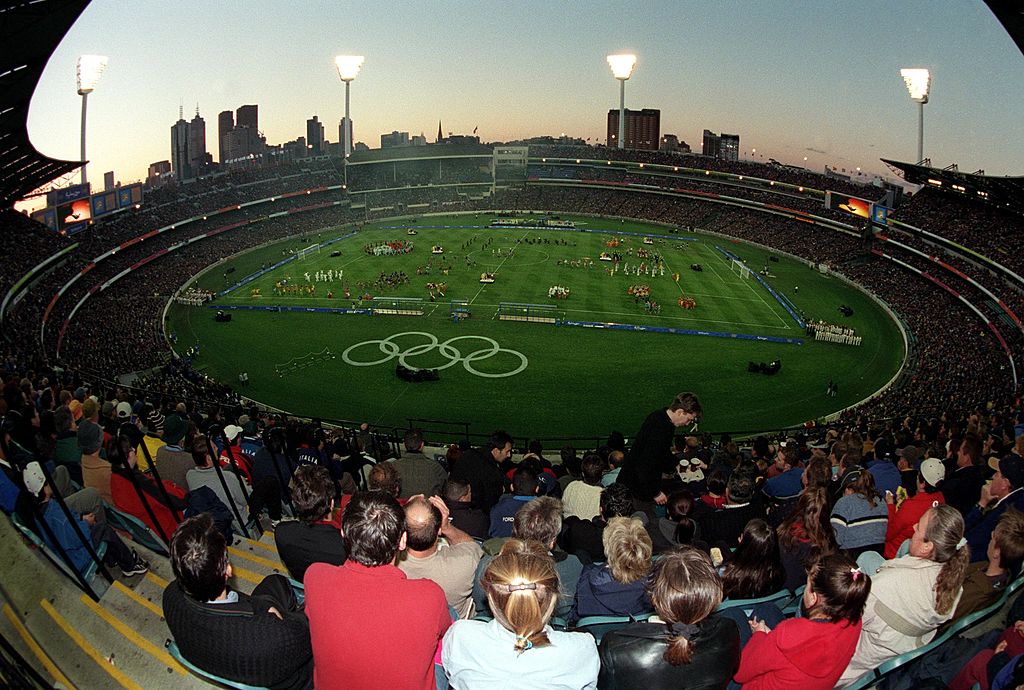
In the second match, goals from Hayden Foxe and Kasey Wehrman saw Australia claw from 2-0 down to level things up at 2-2 against Saudi Arabia, but again Australia was narrowly defeated by one goal. And a 2-1 loss against Honduras in the third game sealed bottom place and an exit from the group stage.
The men's team qualified for Athens in 2004, making it to the Quarter Finals for the first time since 1992, with a win over Serbia and Montenegro and a draw against Tunisia in the group stage. However, the side were knocked out of the Quarters following a 1-0 loss to Iraq.
In 2008, the men's team qualified for a sixth-straight Olympic Games, but were drawn in a difficult group with Argentina, Ivory Coast and Serbia. They started the tournament with a 1-1 draw against the latter, but a losses to Ivory Coast and eventual Gold-Medal winners Argentina condemned the Aussies to a group-stage exit.
In 2020, the Olyroos qualified for the Olympic Games for the first time in 12 years, competing at the postponed Tokyo Olympics in July 2021.
Australia were drawn in a group with Argentina (the South American Champions), Spain (the European Champions) and Egypt (the African Champions).
However, in the opening game, the Olyroos shocked the world with an impressive 2-0 win over Argentina, thanks to goals in each half from Lachie Wales and Marco Tilio.
In the next match against Spain the Olyroos showed a great defensive display to hold back the Spaniards, but an 80th minute header was enough for them to seal a 1-0 win over Australia.
The final group game saw the Olyroos face Egypt for a spot in the Quarter Finals, but a 2-0 loss saw the side exit at the group stage. Ultimately, the team finished an overall position of 12th out of 16 nations.
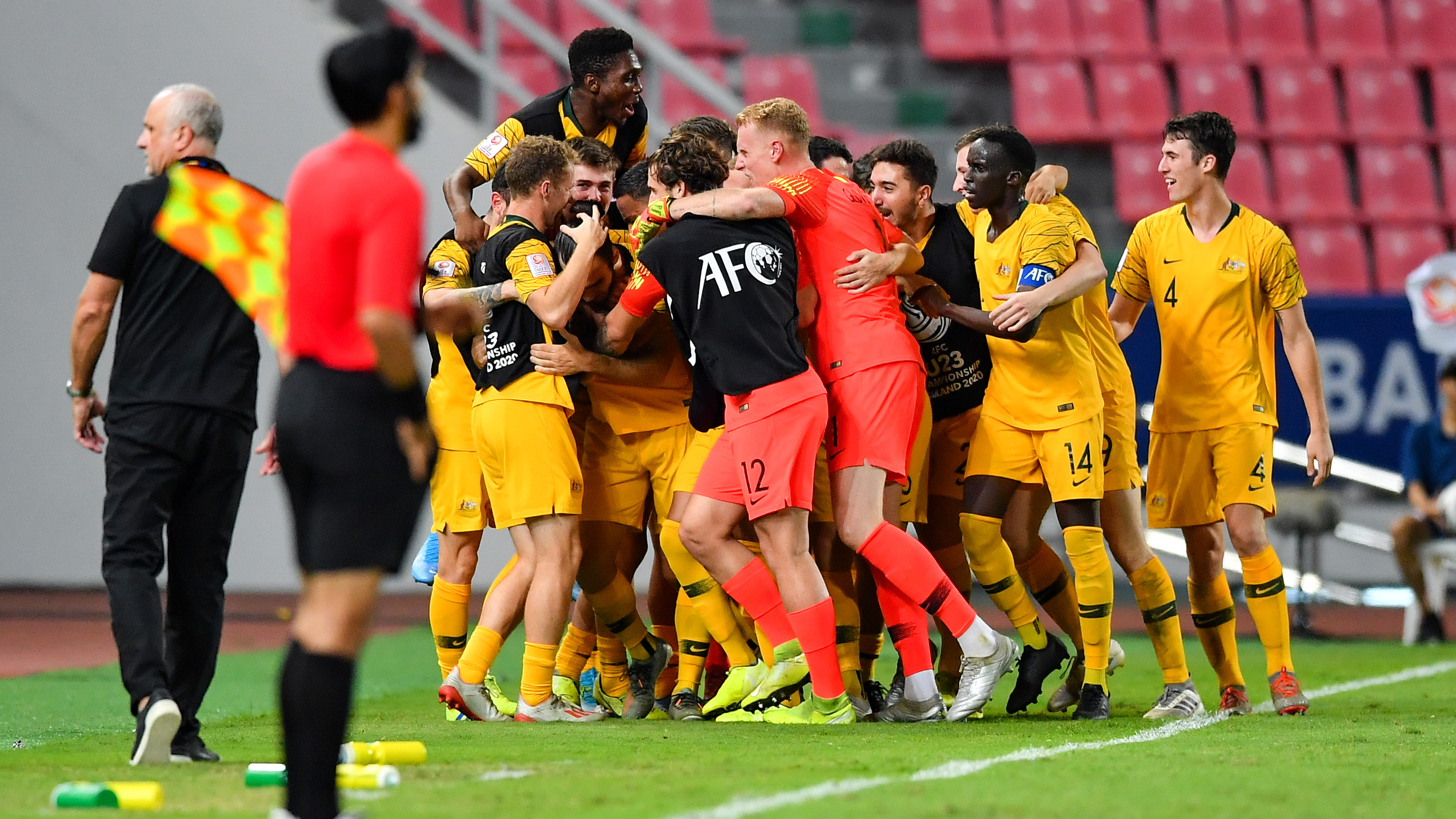
Women's team (Matildas)
Women's Football was added to the Olympics ahead of the 1996 edition in Atlanta, but Australia's first appearance came at the Sydney 2000 Games.
Different to the men's competition, the women's has no age limit, and the 2000 tournament featured a full-strength Matildas team. Australia went down 3-0 in the opening game against Germany, recovered for a 1-1 draw against Sweden, but lost 2-1 to Brazil in the third and exited the tournament at the group stage.
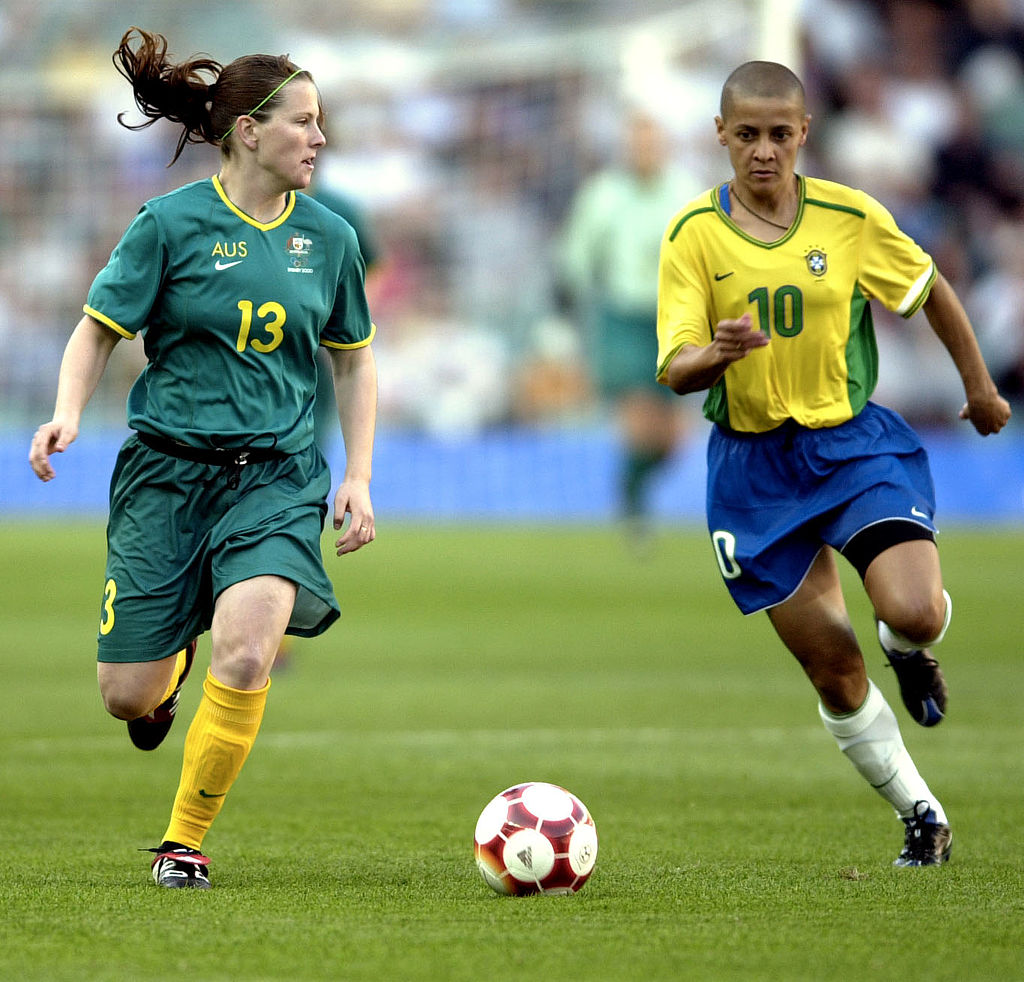
In 2004 the Aussies made it out of the group for the first time, beating Greece 1-0 after losing to Brazil, and then securing a famous 1-1 draw with the United States, courtesy of an 82nd minute Joey Peters goal. However, the team was knocked out of the Quarter Finals following a 2-1 loss to Sweden.
Australia's next appearance was 12 years later at the Rio Olympics in 2016, drawing Canada, Germany and Zimbabwe in their group. A 2-0 loss to Canada first up was followed by a 2-2 draw with Germany, and passage to the Quarter Finals was sealed with a 6-1 win over Zimbabwe.
Australia were drawn against Brazil in the Quarters, but were knocked out via a penalty shootout after the game finished 0-0.
The Matildas returned to the Olympics in Tokyo, reaching the 2020 Games with five wins out of five in the qualifying tournament.
Australia was drawn against New Zealand, Sweden and the United States in the group stage, facing off against our Trans-Tasman rivals in the opener.
Tameka Yallop and Sam Kerr scored to give Australia a 2-1 win, starting off the tournament with a bang. Over 1.87 million Australians tuned into the Matildas second group stage match against Sweden, a broadcast record for a women's team sport in the country, but it was the Swedes who ran out 4-2 winners in an entertaining game.
The Matildas needed a point against reigning World Champions USA in the final group game, and a strong performance saw them keep the United States scoreless in a 0-0 draw.
The Matildas faced Great Britain in the Quarter Finals, and prevailed in one of the teams' greatest ever victories. After scoring late to secure a 2-2 draw at the end of regular time, Sam Kerr and Mary Fowler struck in extra-time, following a penalty save from Teagan Micah, to hand the Matildas a 4-3 victory and passage to the Semi Finals.
Australia would face Sweden in the Semi Finals for a spot in the Gold Medal Match, but a cruel deflection led to a Sweden goal early in the second half, and it was all they needed for a 1-0 win. The Matildas would face USA in the Bronze Medal Match, but also fell by a goal, losing 4-3 to the USA.
Despite the heartbreaking end to the tournament, Tokyo 2020 was the Matildas best ever performance at an Olympic Games, claiming fourth spot and equalling the Olyroos' heroics at the 1992 Games.
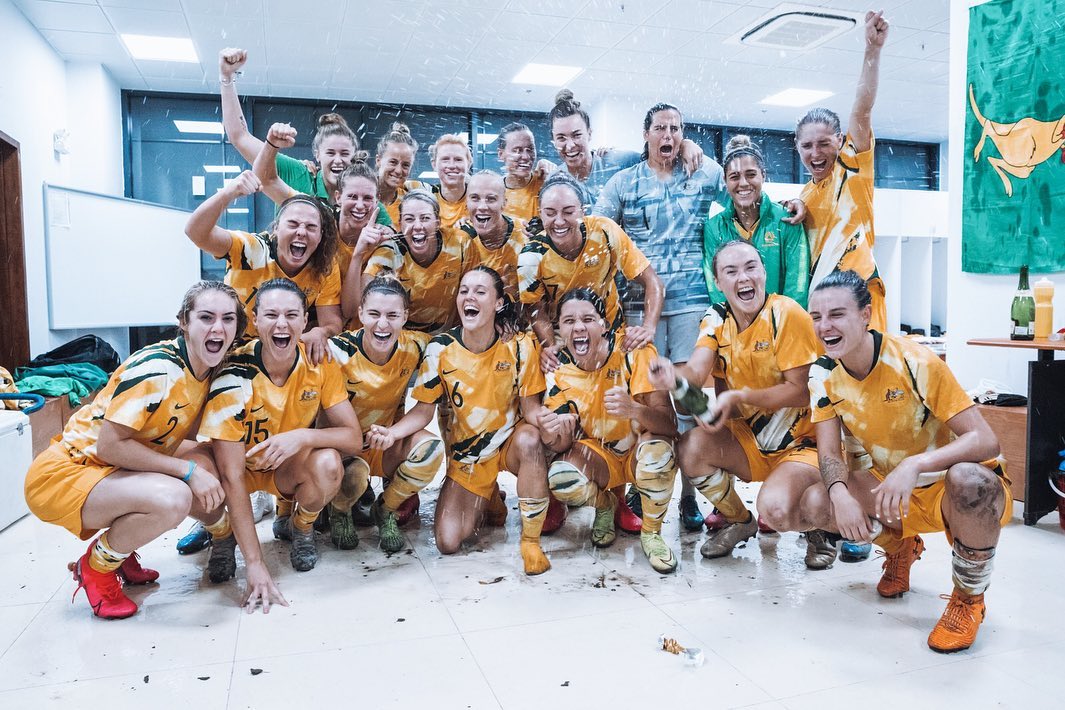
The formation of the National Soccer League

Formation of a national football competition was always a dream among the early pioneers of the game. However, it was not until the 1950's and 1960's following the influx of immigrants post World War II that things began to ramp up within the states.
Following the successful qualification of the Socceroos to the 1974 FIFA World Cup, a meeting in April 1975 at St George Soccer House in Mortdale between a number of delegates brought things together and accelerated the idea of a national division, and in collaboration with the Australian Soccer Federation (ASF), by 1976 the initial fourteen teams to compete in the National Soccer League were announced.
On the weekend of April 2-3, 1977, the competition to be known as the Philips Soccer League began with:
- Eastern Suburbs-Hakoah (NSW)
- St George (NSW)
- Marconi (NSW)
- Sydney Olympic (NSW) - who changed from Pan Hellenic
- Western Suburbs (NSW)
- Canberra City (ACT)
- Brisbane City (QLD)
- Brisbane Lions (QLD)
- Adelaide City (SA)
- West Adelaide (SA)
- Fitzroy United (VIC)
- Footscray JUST (VIC)
- Mooroolbark (VIC)
- South Melbourne (VIC)
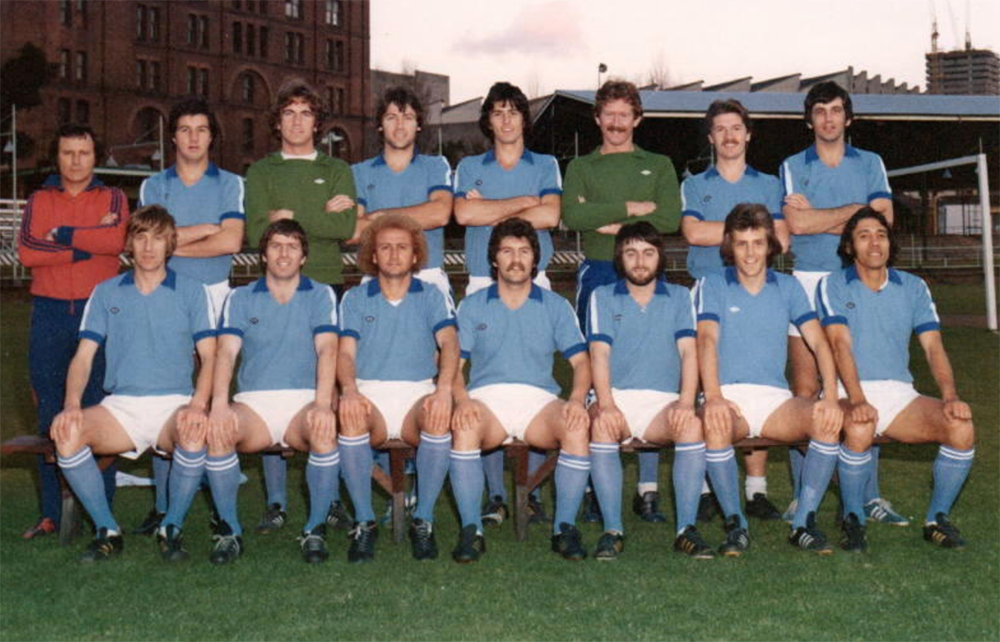
The initial year of the NSL saw the Champion - Eastern Suburbs - crowned after finishing top of the table at the end of the season, but in 1978 a Finals Series was introduced, which went through a few variations, and was not used to determine the Champion team for the time being.
In 1984 the biggest change was made with the introduction of a Two Conference format, with a top five Finals Series for each conference. The Champion was then determined by the finals system. Under that format, the clubs were increased to 24, and divided into an Australian and National Conference, later called the Northern and Southern Conferences.
The Finals Series winners of each conference then met in a national Grand Final to determine the Champion. The dual-conference format was scrapped at the end of the 1986 season.
1987 saw the return of a single-conference format and a top five Finals Series, which was continued in 1992-93 when it was expanded to a top six. The 1987 finals did not count for the Championship, but the Champion-deciding finals series returned in 1988.
The competition was initially played in winter, but in 1989 it was switched to a summer competition to make better use of grounds, and utilising the warmer weather and night matches to attract more families to games.
The league saw an instant boost in average crowd attendances, and in the year 2000 had a record attendance of 43,242 in the Grand Final between Perth Glory and Wollongong Wolves.
However, a number of issues including financial problems forced the NSL to finish at the end of the 2003-04 season, replaced in 2005 by the A-League following the name-change of the Australian Soccer Association (ASA) to Football Federation Australia (FFA).
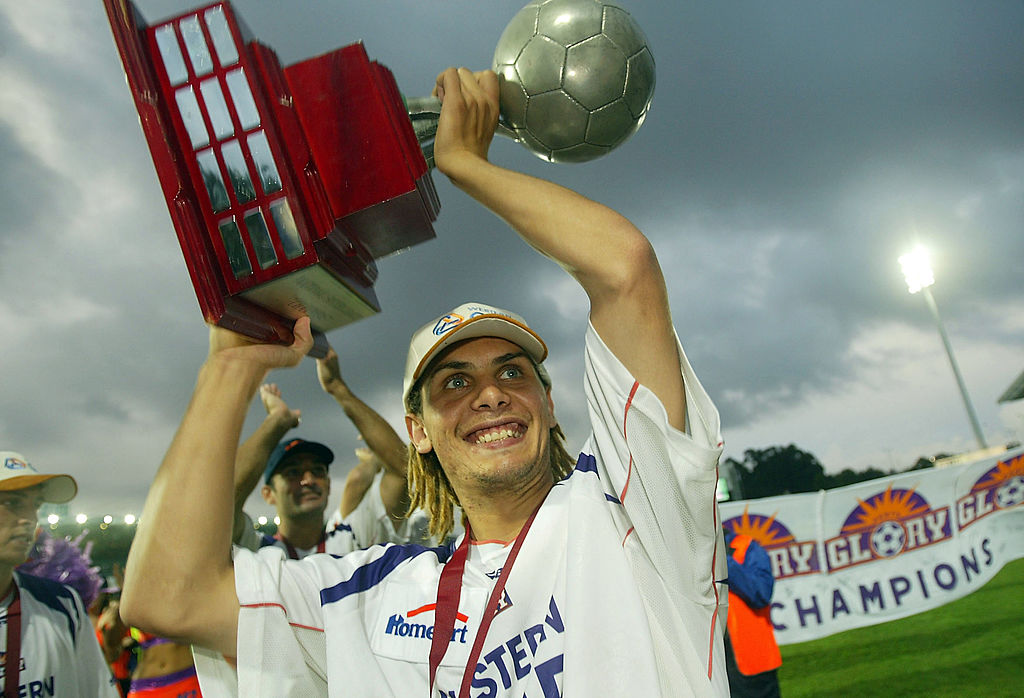
The first national women's championships
The Socceroos' success at the 1974 FIFA World Cup had given the women's game an added impetus, and in August of that year the first National Women's Championships were held in Sydney, comprising of five teams, NSW, Northern NSW (going by Macquarie and Districts), VIC, WA and South QLD.
Games were held in Bankstown, Granville and Centennial Park, with the home team taking out the first Championship, with Northern NSW being the runners-up.
Towards the end of the week of the matches, an important meeting took place. The team officials met to discuss the establishment of an organisation to promote, foster and manage women's football in Australia, and thus the Australian Women's Soccer Association (AWSA) was formed.
National Championships were held every year until 1993, and the AWSA went on to form the Women's National Soccer League (known as the Ansett Summer Series from 1996-2000), the first Australia-wide club competition for women's football.
The first ever competition, held in 1996/97, comprised of six teams split into two conferences. They were:
Southern Conference:
- ACT Academy of Sports (later became Canberra Eclipse)
- ITC Victoria (later became Victoria Vision)
- SA Sports Institute (later became Adelaide Sensation)
Northern Conference:
- Northern NSW ITC (later became Northern NSW Pride)
- NSW Institute of Sport (later became NSW Sapphires)
- Queensland Academy of Sport (later became Queensland Sting)
The league expanded to seven teams in 2004 with the introduction of the Western Waves.
The WSNL ran up until late 2004, when it disbanded alongside the men's NSL. However, those taking part refused to give up, and managed to put on a 2005 tournament, which comprised of a week-long competition in Canberra and a Grand Final in Sydney.
Queensland Sting were the most successful club in WNSL history, winning four Championships.
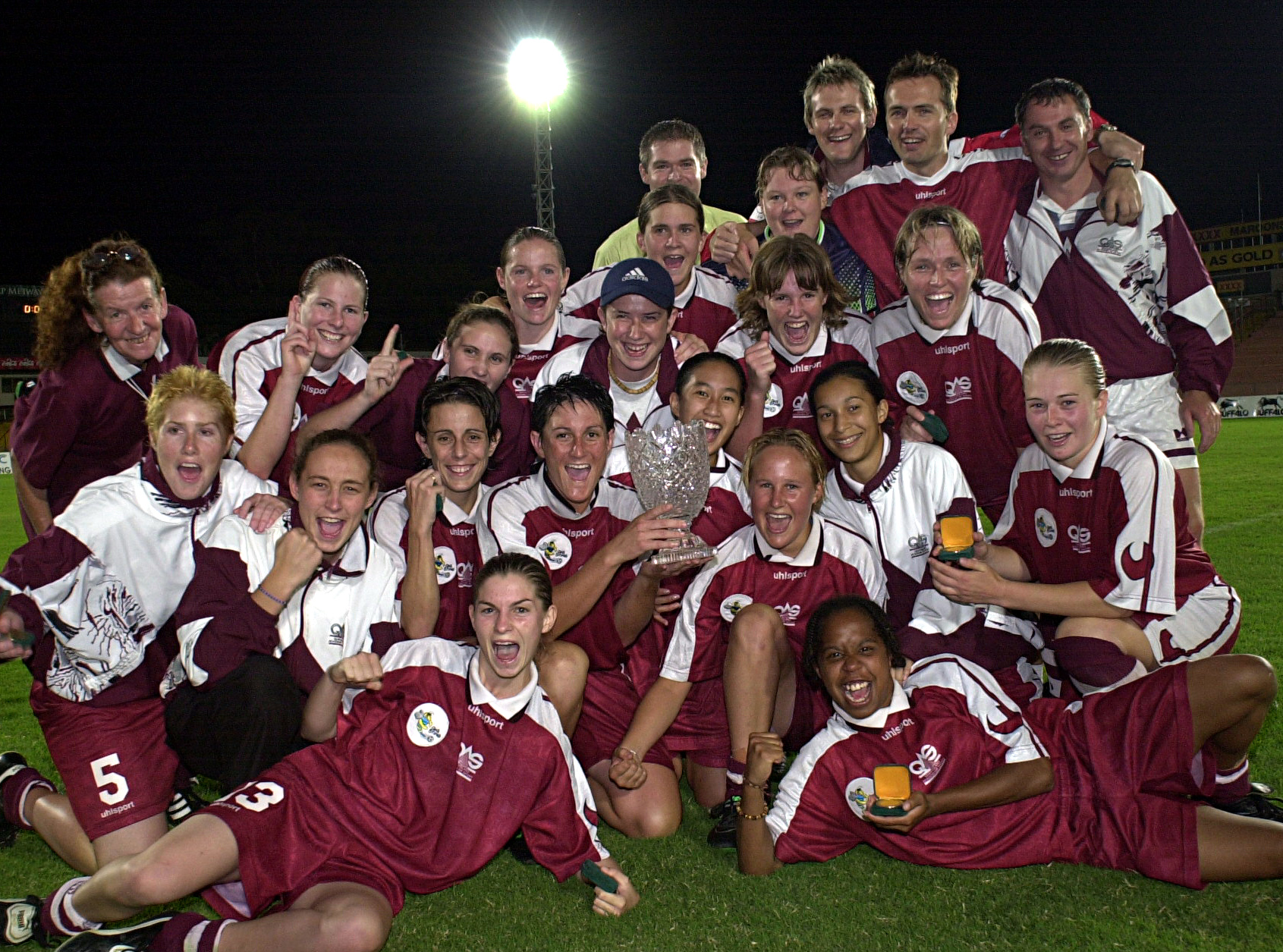
Introduction of the A-League (now A-League Men)

The A-League was established in 2004 as a successor to the recently disbanded National Soccer League, with eight initial teams announced as the inaugural competitors of the competition - the majority of them being new clubs.
On 26 August 2005 the first ball was kicked in the Hyundai A-League, 16 months after the last ball was kicked in the NSL. Sydney FC was the inaugural Grand Final winner, with Adelaide United securing the first Premiership as table-toppers at the end of the season.
The initial season was made up of:
- Adelaide United (SA)
- Central Coast Mariners (NSW)
- Melbourne Victory (VIC)
- Newcastle Jets (NSW)
- New Zealand Knights (NZ)
- Queensland Roar (QLD - now Brisbane Roar)
- Perth Glory (WA)
- Sydney FC (NSW)
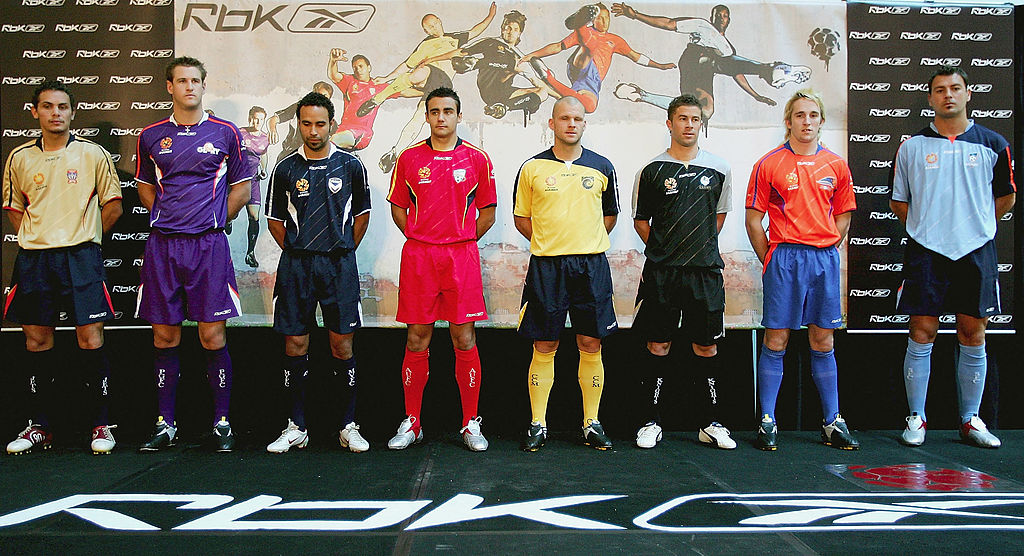
The Knights took part in the first two seasons of the competition, before Wellington Phoenix took over their licence ahead of the 2007/08 season.
The league expanded in 2009 with two new teams - Gold Coast United (QLD) and North Queensland Fury (QLD) - with Melbourne Heart (now Melbourne City) joining in 2010. However, Gold Coast and North Queensland lasted three and two seasons respectively.
A second team in Sydney was announced in 2012, with Western Sydney Wanderers joining the competition for the 2012-13 season, winning the Premiership in their first season and the AFC Champions League in 2014.
In December 2018 the A-League - which had 10 clubs at the time - announced that two new clubs would be added to the competition across the next two seasons, with Western United (VIC) and Macarthur FC (NSW) joining in 2019/20 and 2020/21 respectively.
On 31 December 2020, the A-League officially became independent of Football Australia, coming under the new entity called the 'Australian Professional Leagues'.
In September 2021, the A-League became the A-League Men, with the APL revealing its new identity, with the men’s, women’s and youth leagues brought together under a unified “A-Leagues” banner.
Sydney FC is the most successful team in the history of the A-League, winning four Premierships and five Championships.
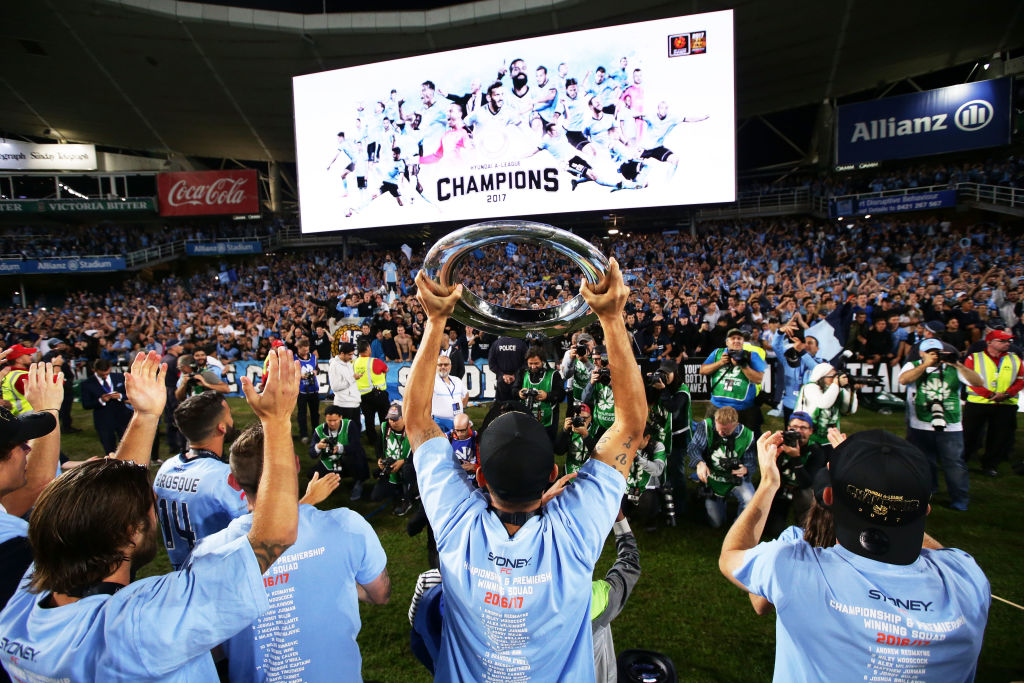
The formation of the W-League (now A-League Women)

A-League Women, known as the Westfield W-League from 2008-2021 due to commercial naming rights, was formed in 2008 and replaced the Women's National Soccer League (WNSL) as Australia's top women's football competition.
The clubs that entered in the Westfield W-League 2008/09 season were aligned with the already-established A-League clubs, with the exception of Canberra United.
The inaugural teams in the competition were:
- Adelaide United (SA)
- Canberra United (ACT)
- Central Coast Mariners (NSW)
- Melbourne Victory (VIC)
- Newcastle Jets (NSW)
- Perth Glory (WA)
- Queensland Roar (QLD - now Brisbane Roar)
- Sydney FC (NSW)
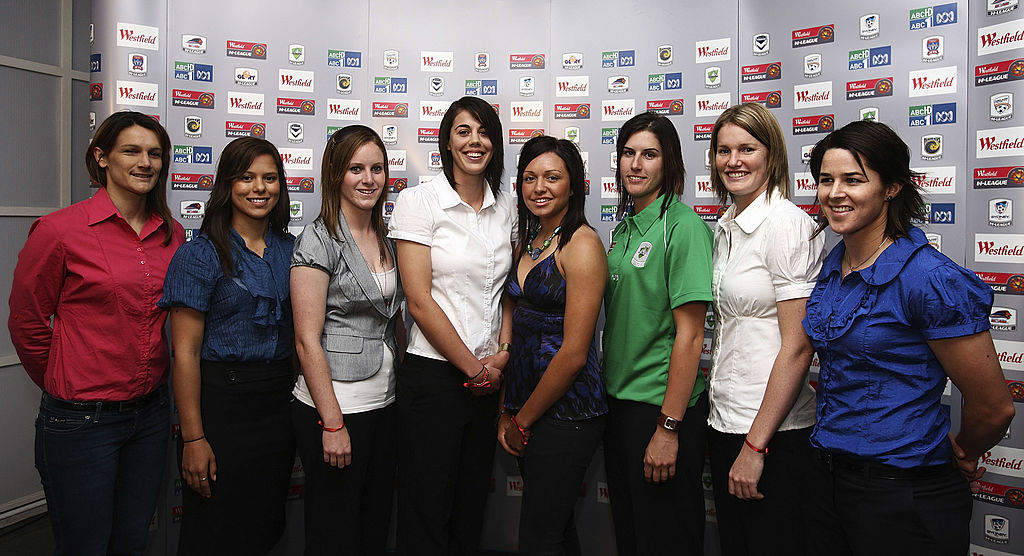
The first ever W-League match took place on 25 October 2008, with Perth Glory hosting Sydney FC. Following the same format as the men's competition, the Premiership was crowned to the team at the top of the table at the end of the season, and the Champions were the winner of the Grand Final in a four-team Finals Series. Queensland Roar were both the Premiers and Champions of the first season.
The Westfield W-League was reduced to seven teams in 2010/11 when the Central Coast Mariners pulled out due to financial reasons, and returned to eight teams when Western Sydney Wanderers were formed in 2012/13.
The competition then expanded to nine teams in 2015, with Melbourne City, going on to win every regular season game on their way to the Premiership and Championship in their inaugural season.
Moving into 2021 the competition remained with nine teams, having officially become independent of Football Australia at the end of 2020, operating under the new entity called the 'Australian Professional Leagues'.
In September 2021 the W-League became the A-League Women, with the APL revealing its new identity, with the men’s, women’s and youth leagues brought together under a unified “A-Leagues” banner.
It was announced that Wellington Phoenix will join the A-League Women competition in 2021/22, moving to a 10-team league, with Western United and Central Coast Mariners to join in coming seasons.
Melbourne City are the most successful team in A-League Women history, winning two Premierships and four Championships.
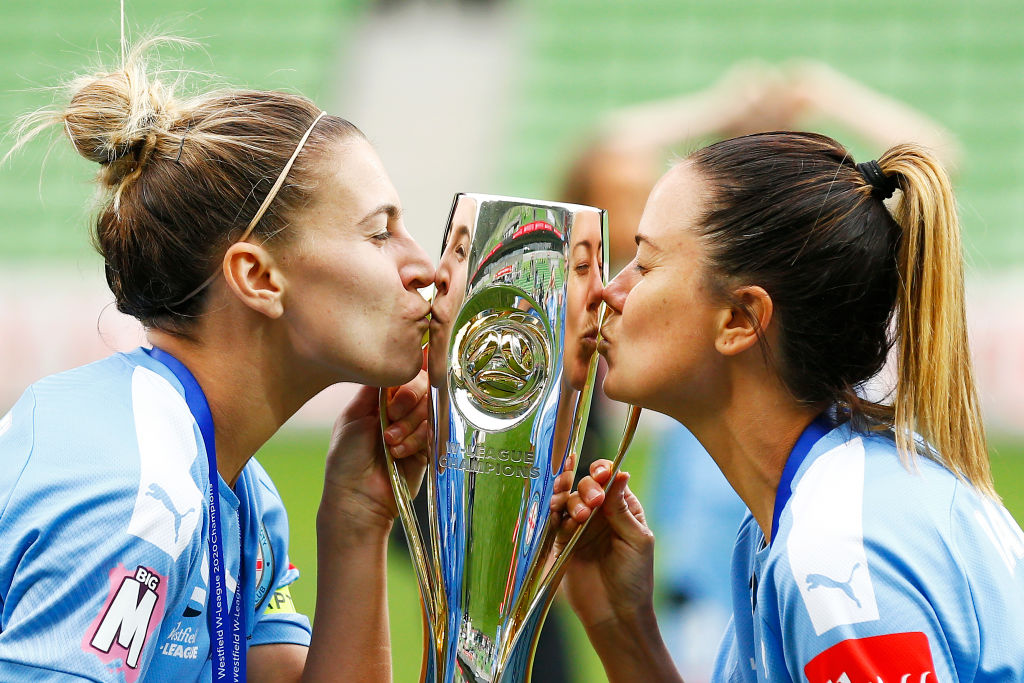
The creation of the FFA Cup

Australia has had numerous state-wide club knockout competitions over the years, but a sustainable national competition had always been difficult to realise.
Prior to the FFA Cup, the Australia Cup was the first and only truly nation-wide club knockout competition, which was held between 1962 and 1968.
On 29 August 2013, it was announced by Football Federation Australia (FFA) that a national Cup knockout competition would commence in 2014, open to any men's team from around the country from the A-League to the lower tiers.
The Preliminary Rounds of the FFA Cup - with Westfield involved as naming rights partner - kicked off in 2014, with the first Round of 32 matches taking place on 29 July.
Initially the competition had a manipulated draw that ensured one Member Federation club reached the Semi Finals of the competition, which helped Bentleigh Greens reach the last four in 2014.
However, in 2021 the competition will be an open draw from the Round of 16 onwards, with the Winner of the FFA Cup also receiving a spot in the AFC Champions League for the first time.
Adelaide United are the most successful team in FFA Cup history, winning the competition on three occasions.

The creation of the National Premier Leagues

The National Premier Leagues (NPL) is the national second-tier competition in Australia which underpins the A-League and Westfield W-League. The NPL operates in each Member Federation under a single national banner.
The NPL was a direct outcome of the National Competition Review (NCR) which commenced in 2010 and was released in 2012.
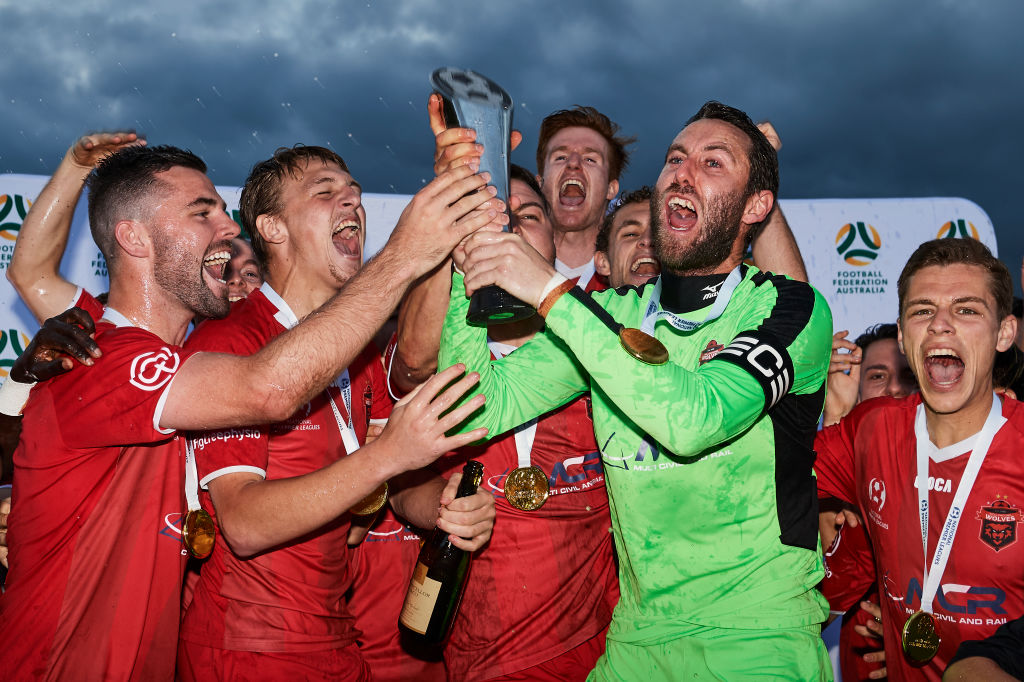
The NCR recommended:
- Create greater consistency across the Member Federation top leagues across Australia;
- Recognise the role that State League clubs are playing to develop players, and showcase local talent;
- Raise overall standards in club management;
- Improve the financial and commercial position of state leagues and clubs.
To be eligible to participate in the NPL within each Member Federation, and in addition to sporting merit, clubs must meet uniform national criteria including:
- Total number of teams and age groups;
- Youth development practices, including the implementation of the National Curriculum;
- Coach accreditation criteria including the introduction of a Technical Director in each club;
- Organisational planning including finance, business planning and organisational structure;
- Greater oversight regarding the charging of player registration fees;
- Facility standards and improvement;
- Adoption of a player points system which incentivises clubs to develop players through their youth team structure as well as produce talent which progresses to national pathway programs and the Y-League, A-League, Westfield W-League and Football Australia National Teams.
Each Football Australia Member Federation manages their local division of the NPL, which culminates in the NPL Finals Series at the end of each winter season involving the league premiers of each Member Federation's NPL division.
Currently, this only applies to the Men’s NPL until such time until Football Australia is able to integrate all states/territories to adopt the Women’s NPL competition.
The NPL represents an important step in the realisation of Football Australia's strategic vision to make Australia a world class football nation and to better connect elite player development and the wider football community.
